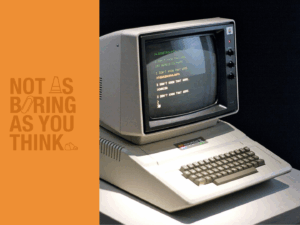The real meaning is almost as fantastical as crime-fighting bubs.
Super babies is a term being used to describe infants whose DNA has been designed or altered to give them genetic advantages.
A revolutionary gene editing technology being used today does have the potential to alter our DNA. But are super babies just a dream of science fiction or are they coming shortly to a maternity ward near you?
To find out, we’ll need to take a look at the current state of play.

GENE EDITING
The power to edit genomes is already here.
Since its discovery in 2012, CRISPR-Cas9 has been creating a buzz in the scientific world. It’s currently the quickest, easiest and most precise method of gene editing. Researchers are already using CRISPR-Cas9 to trial new cancer treatments and find a cure for the herpes simplex virus.
More controversially, however, is its potential to modify human embryos.
WHAT IS CRISPR-CAS9?
CRISPR-Cas9 was first discovered as an immune system in bacteria that fought against viruses. If you want to see how it all works, check out this video:
Although CRISPR-Cas9 has opened the doors to do great things like treat diseases in humans, people are afraid of how it could be used on unborn babies.
DESIGNING BABIES
As scientists begin experimenting with CRISPR-Cas9 on unwanted human embryos, it feels like we’re on the brink of an exciting genetic revolution. But when it comes to designing babies, there are still many big challenges to overcome.
Firstly, for CRISPR-Cas9 to work, the target trait must be almost entirely genetic, with heritability close to 100%. If a trait is too heavily influenced by environmental factors like lifestyle or stress, it’s a lot trickier to genetically program.
Unfortunately, some of the traits you might want to enhance to create a super baby have lower levels of heritability.
For example, creating a hyper intelligent baby is difficult as intelligence is estimated to be around 50% heritability. So when your parents tell you that you got their smarts, they’re only half right.
The other problem is while CRISPR-Cas9 may be great at finding and editing single genes, many traits are the results of hundreds, sometimes thousands, of genes. And we don’t always know which genes lead to which traits.
So if you wanted to design a baby with superhuman strength or gorgeous good looks, you’re going to have to work out all the genes involved with those traits first.
We won’t be able to design any super babies until we’ve worked out the complex stuff. But even after we do, there will be one last hurdle which could hold us back.

ETHICS
With great power comes great responsibility and gene editing raises some pretty big ethical questions.
It’s a lot of pressure to be responsible for choosing your child’s genes. What if they don’t agree with your decisions? At least when you give the genetic lottery a spin, no one is directly to blame for the outcome.
And it’s not just the child who may judge your decisions. There could be societal expectations on which genes you do and don’t allow. Even with today’s prenatal screening technology, parents may face criticism for their decision to terminate, or not terminate, a fetus with Down Syndrome.
We also don’t know how DNA tampering will affect future generations. Creating designer babies could eventually create an irreversible change to the entire human gene pool.
With all things considered, it’s understandable why some may feel uncomfortable with the idea of gene editing. But with every potential risk, there is an incredible potential benefit.
Imagine a world without genetic diseases, where cancer can be easily cured and babies are born healthier, stronger and better than ever before.
Sure, it might be a few more years till we get there, but if we continue to research, we could see big changes in our lifetime thanks to CRISPR-Cas9.
Would you be willing to edit the genes of your unborn child?








